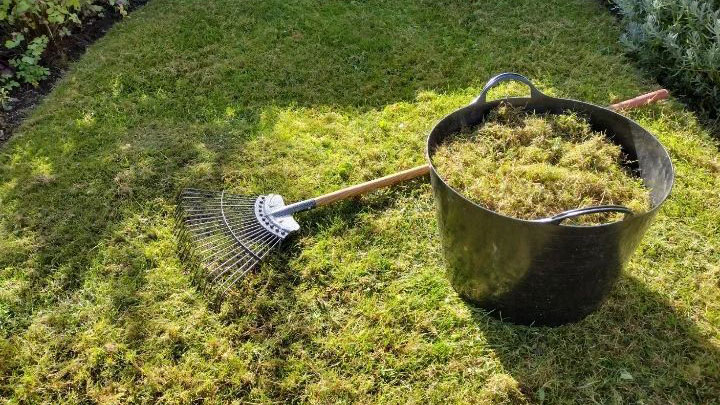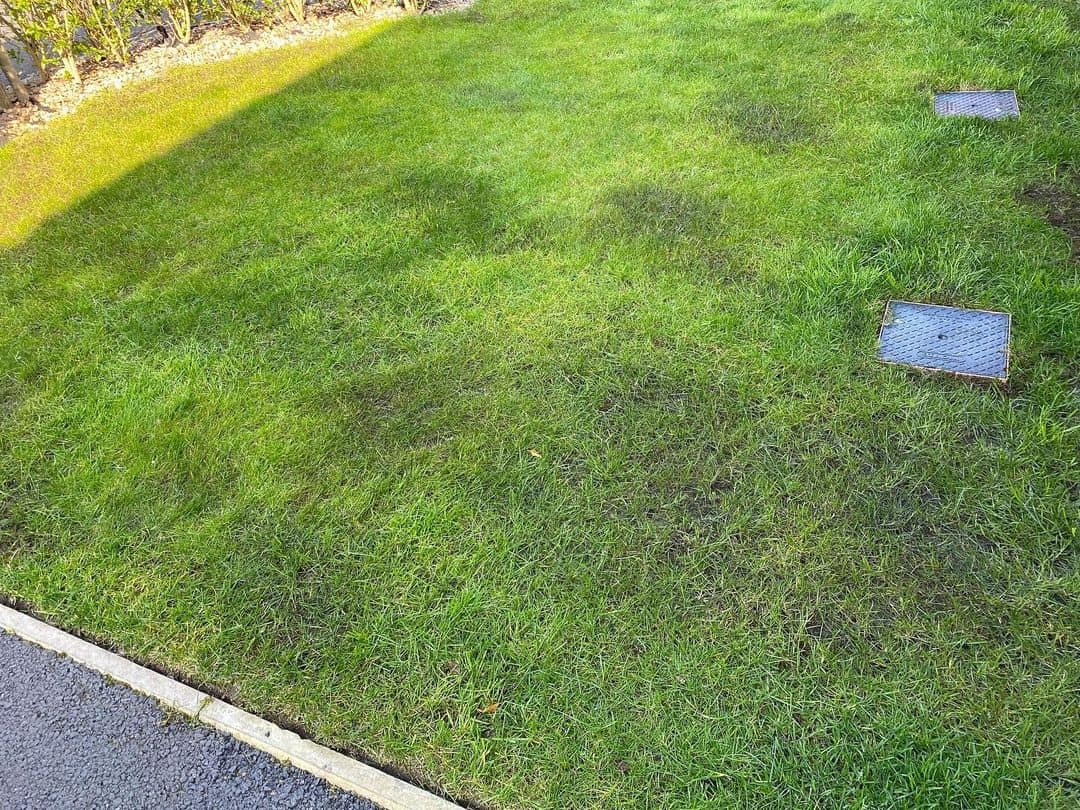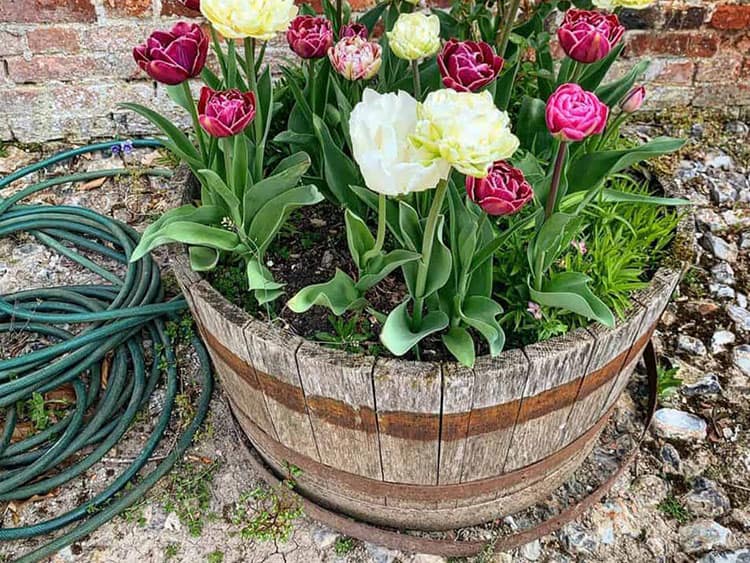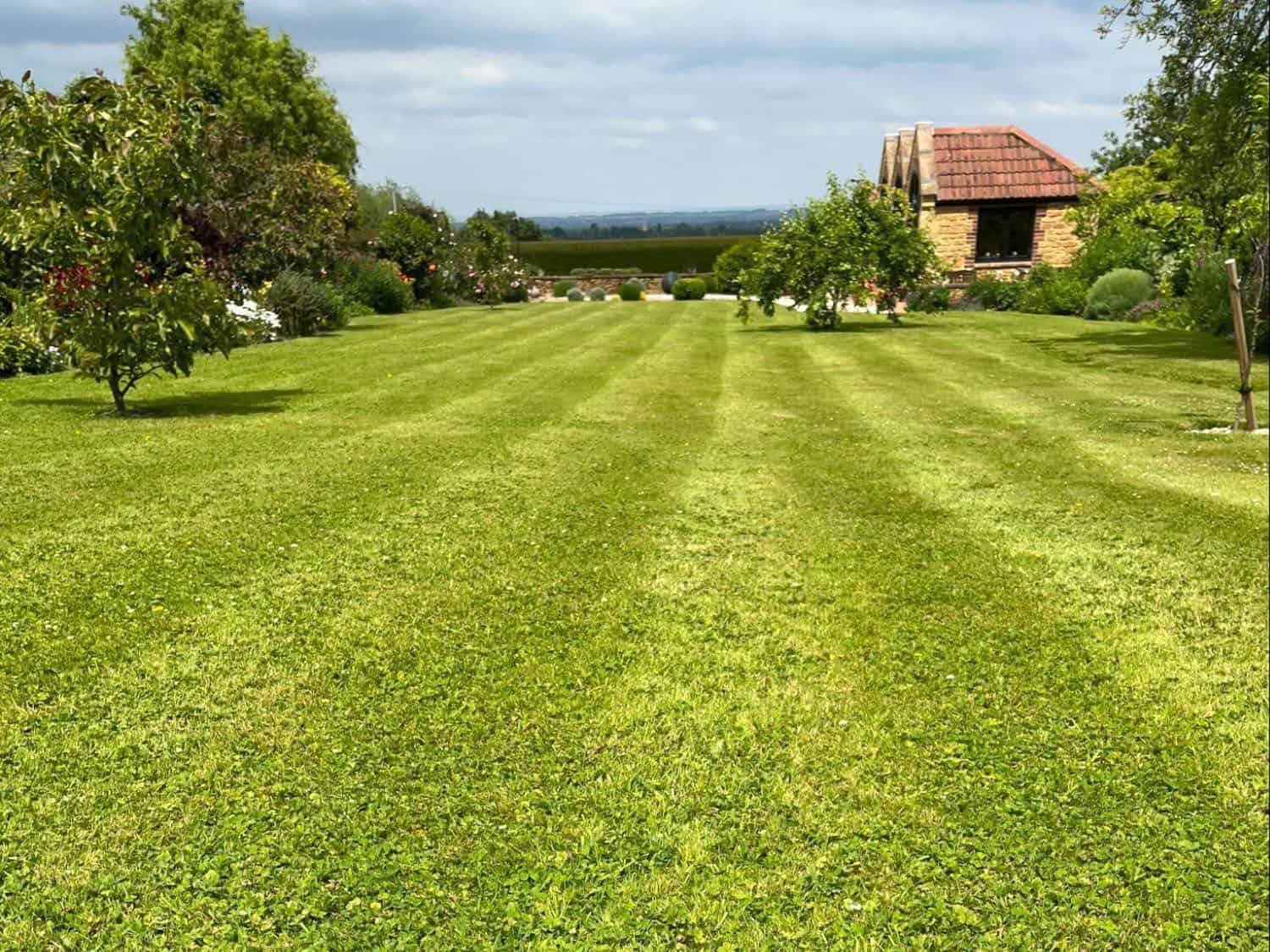Using a rake to scarify your lawn isn’t just a great option for the economy-minded. The process is also eco-friendly and gentle on your lawn.
Scarifying your lawn helps you get rid of dead and drying grass, improving your lawn’s overall health and making it look greener and happier.
Using a rake to scarify your lawn is easier than you may think. Before beginning, prepare your lawn by removing moss and mowing the grass short. Dig the rake into the thatch and gently pull it out. Switch directions for better results. Finally, collect all the thatch and compost it.

Image credit: @thegardeningartistdurham
What does a scarifier do?
A scarifier is a garden tool that’s designed to remove thatch from your lawn. Also known as a dethatcher, it cuts into the soil and pulls out dead and drying grass.
Whether you’re using a powered scarifier or dethatching lawn by hand, lawn scarification brings with it several benefits. It helps remove the buildup of dead organic matter, leading to better air, water and nutrient absorption.
Organic matter buildup can make your lawn patchy over time. It will also promote the growth of moss and weeds. By scarifying your lawn, you not only get rid of unwanted greens but also turn your patchy lawn into a lush green one.
What’s more, scarification is ideal before overseeding your lawn. It allows the seed to make easy contact with the soil. Plus, it lets in enough sunlight for germination.
How to scarify lawn with a rake
You can scarify your lawn in a few simple steps. Start by removing any moss and mowing your lawn. Mow first in one direction and then in another. Finally, collect all the thatch and that’s it!
But before you get started, make sure you get the timing right. Always begin your lawn scarification project in spring or autumn. That’s when the grass is actively growing and can quickly recover from any stress.
Step 1 – Prepare your lawn
To make your scarifying efforts as effective as possible, it’s important to first prepare your lawn. This includes mowing your lawn and killing moss.
We recommend using the mower on a low setting. The shorter the grass, the easier it is to scarify your lawn by hand. Collect the grass clippings at the end of your job.
Next, apply an organic moss killer to your lawn. Raking mosses may spread the spores. In other words, you may be in for a moss epidemic. Wait for a week or two before proceeding.
Step 2 – Start raking

Image credit: @our.house.up.the.hill
Dig the tines of the rake into the thatch. Lift and pull it towards you. The rake will easily remove all thatch as you proceed. You don’t need to use a lot of force. Otherwise, you might end up damaging the healthy grass.
Work in one direction. Go over the same area a few times. You will notice dried grass coming out from around the green grass. Clean the manual thatching rake to ensure it stays effective.
Tip: Raking by hand can cause blistering. Wear gloves with talc for comfort.
Step 3 – Change direction
Raking in one direction will not help you get rid of all the thatch. So, after you’ve raked in one direction several times, switch the direction.
You can apply a little more pressure and push the rake deeper into the soil. This will bring up more thatch and remove even the most stubborn debris. You’ll also be able to complete the job sooner.
Step 4 – Collect all the thatch
Once you’ve scarified your entire lawn, collect all the loose thatch that you’ve pulled up. If left on the surface of your lawn, thatch won’t decompose well and might even harbour insects and mould.
Instead, simply compost all the thatch. The organic matter will break down in a few months and you can use it to fertilise your lawn and flower beds.

Image credit: @our.first.garden
What to do after scarifying
The first thing to do after scarifying is to water your lawn. A good drench will help the grass recover faster. You can also feed and top dress your lawn to speed things along.
If you’re feeling a bit more adventurous, this is also a good time to hollow-tine your lawn. It will reduce soil compaction and improve drainage.
Also, overseed your lawn, especially the patchy areas. Cover the seeds with a layer of topsoil. These aftercare steps will help your lawn bounce back in no time.
For more tips, read our step-by-step guide on what to do after scarifying a lawn.
The wrap up
Befriending the humble garden rake has many benefits. You can use it to gather and scoop stray leaves and twigs, or use its flat head to spread top dressing material.
You can also use a rake as a manual lawn dethatcher. It will effectively pull out thatch buildup without harming the lawn grass.
The process may be labour-intensive, but a good workout never hurts a gardener. Especially when the result is a healthier and more beautiful lawn.






